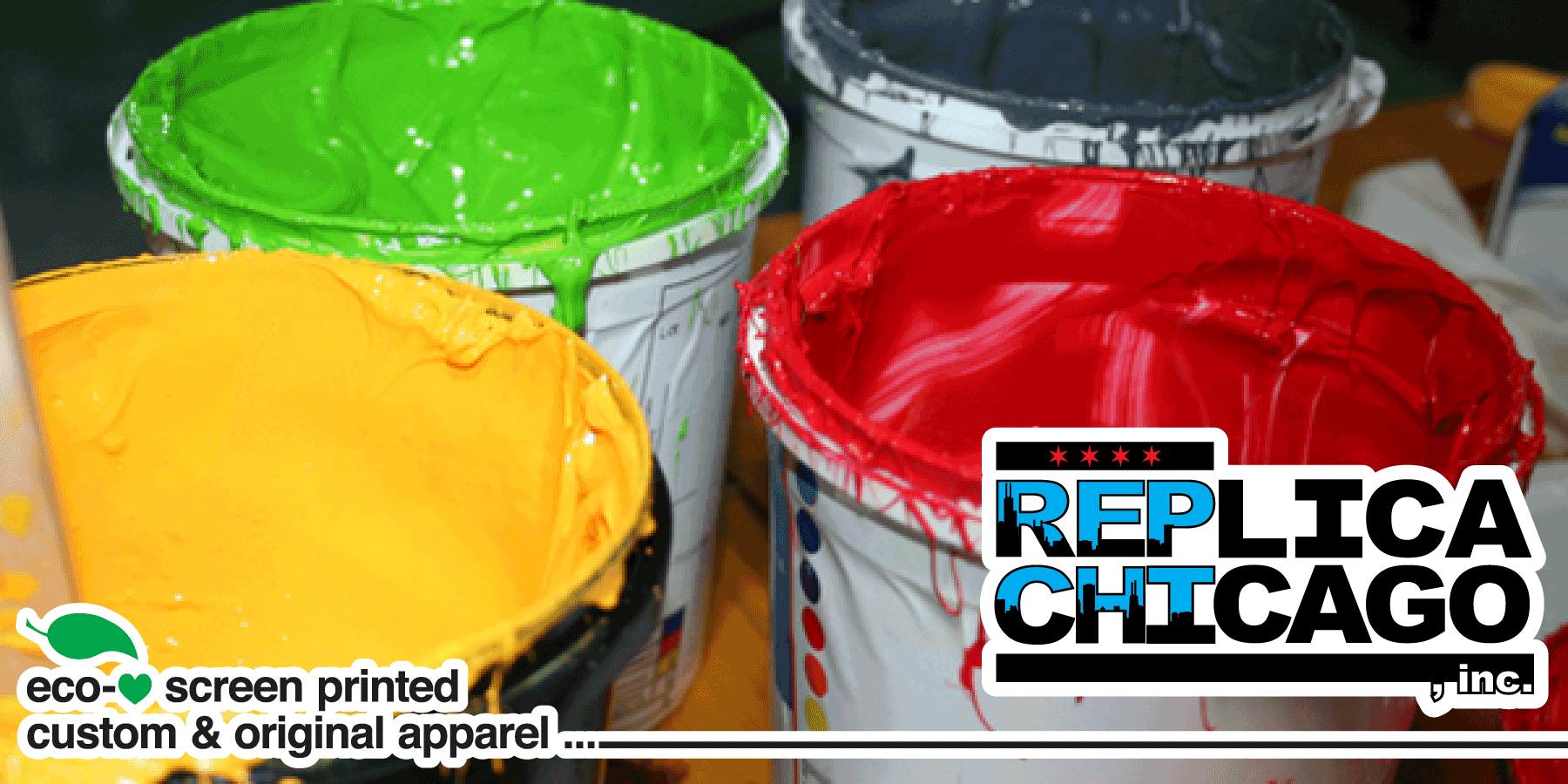Artistic Silk Screen Printing for Limited Edition Prints
Artistic Silk Screen Printing for Limited Edition Prints
Blog Article
Display Printing Uncovered: Everything You Need to Understand About Tee and Garment Printing Techniques
If you've ever questioned just how those vibrant styles end up on your preferred tee shirts, you remain in the ideal area. Display printing is a remarkable approach that combines art with strategy, offering limitless opportunities for creativity. Understanding the basics, from tools to ink choices, can significantly influence your results. Ready to check out the necessary aspects that make display printing an art kind? Let's discover the details that can boost your projects.
The Basics of Screen Printing: Just How It Works
When you plunge into screen printing, you'll uncover it's both an art and a science. At its core, screen printing entails producing a stencil, or display, that enables ink to pass through just in specific locations.
Next, you'll blend your inks and prepare your printing surface area. Position the screen over the fabric, after that use a squeegee to press ink through the display onto the garment. This process calls for precision, as you desire clear, lively prints. After printing, you'll cure the ink with warm, ensuring it sticks to the material and lasts through cleans. Each step is crucial, and grasping them will certainly raise your display printing skills, changing basic garments into distinct, meaningful items.
Sorts Of Screen Printing Methods
When you realize the basics of screen printing, it's time to discover the numerous strategies that can raise your designs. One prominent approach is standard screen printing, where ink is pressed with a stenciled screen. This method is wonderful for strong, lively shades. There's water-based ink printing, which offers a softer feel and is environment-friendly, yet it calls for a various technique to curing.
Another alternative is plastisol printing, known for its longevity and vivid colors, making it a preferred for lots of brands. Experiment with halftone printing to develop slope results and elaborate designs.
Important Equipment for Screen Printing
To accomplish stunning results in screen printing, having the right tools is fundamental. First, you'll need a sturdy display printing frame, which holds the mesh that transfers your style onto the garment. Next, purchase top quality mops; these are important for using ink equally across the screen. You'll likewise need a great direct exposure unit to create your screens, along with a washout booth for cleaning them after usage. A reliable warmth source, like a conveyor clothes dryer or heat press, is crucial for curing your prints to assure durability. Do not neglect a correct workspace, furnished with tables and storage space for your products. Safety gear, such as masks and gloves, will certainly keep you safe from chemicals and inks. With the right tools, you'll be well on your way to producing professional-quality prints.
Selecting the Right Inks and Materials
When choosing inks and materials for screen printing, you need to take right into account the kind of ink that works best for your project. Consider textile compatibility to ensure your styles look last and terrific long. Check out environmentally friendly ink options to make your printing process much more sustainable.
Types of Screen Inks
Picking the best display ink is vital for achieving vivid, resilient prints that meet your job's demands. There are a number of sorts of display inks to examine. Plastisol ink is preferred for its convenience and convenience of usage, giving superb shade opacity on dark materials. Water-based ink, on the various other hand, uses a softer feel and is environmentally friendly, making it excellent for those aiming to minimize their environmental influence. Discharge inks get rid of dye from the material, leading to a soft, vintage look however need particular handling. Lastly, specialized inks, such as metal or glow-in-the-dark, can include distinct impacts to your styles. Assess your project needs and select the ink that straightens best with your wanted outcome.

Fabric Compatibility Factors To Consider
Comprehending material compatibility is vital for attaining premium display prints, specifically because various materials respond distinctively to different inks. Always test your inks on example fabric to ensure they stick appropriately and keep color honesty. Furthermore, keep in mind that material weight and structure can affect the last result, so picking the appropriate ink and product combo is important for your project's success.
Eco-Friendly Ink Options
Eco-friendly inks are ending up being a prominent option for screen printers who intend to lessen their environmental effect while keeping top quality. When choosing inks, think about water-based inks, which are less harmful and much easier to cleanse up contrasted to standard solvents. These inks bond well with materials, providing vibrant outcomes without poisonous chemicals. You might also discover eco-solvent inks that utilize less unpredictable organic substances (VOCs), making them a much safer option for both your wellness and the world.
Additionally, seek inks made from renewable energies, such as soy or vegetable-based options. By selecting the appropriate inks and materials, you'll not just create spectacular designs however likewise add to a more sustainable printing procedure. Make the switch, and your prints will certainly reflect your dedication to the setting!
Preparing Your Style for Display Printing

Submit Layout Needs
To assure your layout looks sharp and vivid on fabric, you'll need to pay attention to submit layout demands for display printing. Start with vector documents like AI or EPS, as they can be scaled without losing top quality. If you use raster photos, select high-resolution documents, such as TIFF or PNG, preferably at 300 DPI. Avoid using JPEGs, as they can shed clarity when resized. Additionally, make sure your design has a clear history to avoid undesirable white edges on your prints. Keep color settings in mind; CMYK is common for screen printing, so convert your RGB develops accordingly - screen printing kit. By adhering to these standards, you'll set your art work up for an effective print.
Shade Separation Methods
Color separation is a necessary step in preparing your design for display printing, and mastering it can considerably boost your print high quality. You'll need to break your design into individual colors, as each color requires a different display during printing. This precision not only assures exact color depiction yet also enhances the printing procedure.
Resolution and Size
Achieving the ideal cause screen printing starts with assuring your layout has the ideal resolution and dimension. Preferably, your art work must go to least 300 DPI (dots per inch) for sharp, clear prints. If you make use of reduced resolution, your end product may look pixelated and amateur.
When it pertains to dimension, consider the dimensions of your print area. Style your art work to match the last print size, ideally creating it in look these up the actual measurements you'll be publishing. This way, you'll prevent any kind of unforeseen scaling problems.
Always examine your layout in both vector and raster layouts. Vector graphics can be scaled without losing quality, making them excellent for display printing. Preparing properly will guarantee your design looks fantastic on every garment!
Step-by-Step Screen Printing Process
Display printing is a vibrant procedure that permits you to develop vibrant designs on various surfaces. To get begun, you'll require a screen, emulsion, and your picked ink.
Pour ink onto the display and make use of a squeegee to press the ink with the stencil onto the textile. Lift the display meticulously and let the print dry. You have actually successfully display printed your layout.
Tips for Successful Display Printing Projects
While you're diving into your display printing tasks, bear in mind that preparation is key to success. Beginning by gathering all your products-- inks, displays, garments, and squeegees. A clean workspace helps protect against unwanted mistakes, so clean prior to you begin.
Following, verify your art work is high-resolution and properly sized for your garment. Test your display for proper direct exposure and clean it extensively to stay clear of spots. When blending your inks, adhere to the supplier's guidelines to accomplish the appropriate consistency.
During printing, use even stress with your squeegee for regular outcomes. Do webpage not rush; take your time to confirm each print satisfies your requirements. After printing, allow your garments dry entirely prior to taking care of or packaging them.
Last but not least, always maintain a sample of your work for future reference. This way, you can examine your progression and enhance your techniques in time. Happy printing!

Regularly Asked Concerns
The length of time Does It Take to Set up a Screen Printing Task?
Establishing up a screen printing task commonly takes around thirty minutes to an hour. You'll prepare the displays, mix inks, and change the press. The time varies based on complexity and experience, so remain arranged!
Can I Print on Various Material Types Making Use Of the Same Technique?
Yes, you can publish on different textile kinds utilizing the same method, but you'll need to change your inks and setups. Some fabrics soak up navigate to these guys ink in different ways, so trying out assurances the most effective outcomes for each and every product.
What Are Typical Mistakes to Prevent in Display Printing?
When screen printing, stay clear of typical errors like making use of the wrong ink, disregarding appropriate exposure times, or missing pre-press checks. Always evaluate your setup and maintain clean displays to guarantee quality results each time.
Exactly How Can I Appropriately Tidy and Keep My Display Printing Equipment?
To appropriately tidy and maintain your screen printing tools, you need to consistently wash displays with ideal solvents, examine mops for wear, and assure all devices are stored completely dry and dust-free. Uniformity prevents pricey repair work and improves performance.
Is Screen Printing Eco Friendly Contrasted to Various Other Techniques?
Display printing can be more eco-friendly than other approaches, particularly if you use water-based inks and eco-conscious products. By picking sustainable supplies and techniques, you minimize waste and decrease your effect on the earth.
Screen Printing Uncovered: Whatever You Required to Know About Tee and Garment Printing Techniques
At its core, screen printing entails creating a stencil, or screen, that enables ink to pass with just in specific locations. Position the screen over the material, then utilize a squeegee to press ink through the screen onto the garment. One preferred technique is conventional screen printing, where ink is pushed via a stenciled display.When choosing inks and materials for display printing, you need to take into account the type of ink that functions ideal for your job.
Report this page